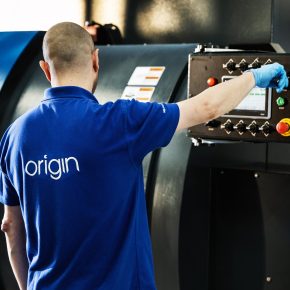
Achieving the perfect balance
Vertically sliding sash (VSS) windows hold a special place in British architecture with the oldest surviving examples dating back to 1670. The longevity of this window design says a lot about its versatility to suit many different types of property, residential and commercial, as well as its visual appeal for those designing buildings and using them.
Today’s energy efficiency agenda has shifted priorities in almost every area of building product specification to put thermal performance ahead of aesthetics. That’s hardly surprising given that Part L currently demands a window that achieves a U-value of 1.6 W/m2K for refurbishment projects.
So clients, developers and architects face the challenge of balancing long term sustainability, including energy performance in-use with aesthetics and budget.
Such a challenge has, at times, suggested the scope to use VSS windows could be more limited in future and poses many questions. How can traditional timber sash windows match the long term low maintenance properties of aluminium and PVCu? How can PVCu versions match the aesthetics of timber and aluminium? How can the design of VSS windows in any material meet the tough thermal requirements of the latest Part L? And how can the VSS window compete with the popularity and usually lower unit cost of casements, reversible and tilt and turns?
As thermal insulation standards for windows have been continuously rising since the arrival of double glazing in the mainstream in the 1970s, forward thinking window manufacturers have always been ahead of the curve and prepared to invest to meet architect and developer needs. In the case of the VSS, that means continuously improving thermal performance without detracting from looks or making the window prohibitively expensive.
That gives today’s latest generation of aluminium VSS window the edge over timber and PVCu alternatives for a number of reasons.
Striking the optimum balance
With its long term visual appeal combined with low maintenance requirements, aluminium is often the material of choice for windows and doors for all kinds of projects heritage, modern and contemporary. In many cases, aluminium windows can be regarded as fit-and-forget as they retain their exterior appearance without the need for regular repainting and their structural and mechanical design keeps technical maintenance to a minimum.
Aluminium is the only alternative to traditional timber when it comes to replicating slim sightlines. Unfortunately, the design of PVCu box sashes will struggle to achieve the same result, especially on smaller VSS windows, as the profile requires larger chambers to deliver the thermal insulation necessary. There is also the question of colour fading or discolouring over time on PVCu frames a fate that powder coated or anodised aluminium frames do not suffer.
Timber VSS windows will need some form of surface re-coating as frequently as every five years in some cases. It is not only a costly exercise to appoint contractors to undertake this repainting, but it also causes unwelcome disruption to tenants, homeowners and in the case of commercial and public properties building owners and users.
The more maintenance cycles that are required for a window installation, the more likely it is that its long term sustainability rating will suffer.
Planner-friendly design
Traditional timber sash windows feature slim framing elements throughout, so any replication in alternative materials must do the same. Often planners will start with the requirement for exact replacement on refurbishment projects in sensitive locations or listed buildings and, in some cases, only timber will fit the bill. There are many other occasions, however, where aluminium is perfectly acceptable to planning officers, subject to meeting specific approvals.
Aluminium profile has a major advantage over PVCu when it comes to slimness, with products available, for example, which feature a meeting rail with a height of just 36mm compared with 48mm for a typical PVCu VSS and frame depths of 114mm for aluminium compared to 125-136mm for PVCu.
Importantly, these reduced dimensions deliver a whole window frame slimness which helps to maximise available daylight within homes and buildings without compromising high levels of thermal insulation.
Rising thermals
With the continuous toughening of thermal performance, innovation has been the key to ensuring architects and specifiers can use their preferred materials throughout the whole build process, not just windows and doors.
Aluminium VSS windows continue to keep ahead of requirements thanks to a combination of profile improvement and a sealed unit configuration that’s already proven to insulate extremely well. Part L 2013 is expected to demand a B Window Energy Rating (WER) and a 1.5 W/m2K U-value for dwellings, a performance level which is already available.
The key to continuously improving the insulation properties lie in several elements of the window.
One of the most important being the thermal break that features in all today’s aluminium window systems.
But the glazing specification must also be capable of providing superior thermal insulation without eliminating beneficial solar gain. Fortunately the glass processing industry already has the products available through a consistently reliable supply chain.
24mm double glazed units typically feature in the B rated aluminium VSS. This is configured with a 4mm low iron glass on the outside pane, a 16mm warm edge space bar, 90% argon gas fill and a 4mm Planitherm low-e softcoat interior pane.
Ultimately these innovations give the VSS a bright outlook. Other window styles may have grown in popularity but they do not necessarily meet aesthetic goals. Choosing the latest generation aluminium VSS will strike a perfect balance.
Latest news

21st November 2024
Altro distils style and performance at English Spirit
English Spirit Distillery has used an extensive package of Altro products front and back of house, in their new visitor centre café, shop and viewing area for the working distillery.
Posted in Articles, Bathrooms, Bedrooms & Washrooms, Building Industry News, Building Products & Structures, Building Systems, Case Studies, Floors, Interior Design & Construction, Interiors, Kitchens, Restoration & Refurbishment, Retrofit & Renovation, Timber Buildings and Timber Products, Walls
21st November 2024
Abloy UK creates bespoke locking solution for Secure Information Boxes
Abloy UK has supplied The Safety Letterbox Company Ltd with a bespoke Sentry CL811 Camlock for use in its Secure Information Boxes, assisting life safety and complying with new regulations and legislation for high rise buildings.
Posted in Access Control & Door Entry Systems, Architectural Ironmongery, Articles, Building Industry News, Building Products & Structures, Building Regulations & Accreditations, Building Services, Case Studies, Facility Management & Building Services, Health & Safety, Posts, Restoration & Refurbishment, Retrofit & Renovation, Security and Fire Protection
20th November 2024
CUPA: CUPACLAD enhances hotel aesthetics with a creative natural slate façade
Situated at the northern edge of a newly developed retail park near Bristol, the Abbey Wood Travelodge was conceived as part of the company’s new Budget-Luxe line of hotels – it features CUPACLAD, from CUPA PIZARRAS.
Posted in Articles, Building Industry News, Building Products & Structures, Building Systems, Case Studies, Cladding, Concrete, Cement, Admixtures, Facades, Posts, Restoration & Refurbishment, Retrofit & Renovation, Walls
20th November 2024
Origin launches in-house powder coating facility
Origin’s latest investment is set to redefine industry standards as it launches its own in-house powder coating facility.
Posted in Aluminium Products, Articles, Building Industry News, Building Products & Structures, Building Systems, Doors, Glass, Glazing, Innovations & New Products, Paints, Coatings & Finishes, Restoration & Refurbishment, Retrofit & Renovation, Site Preparation, Windows
 Sign up:
Sign up: